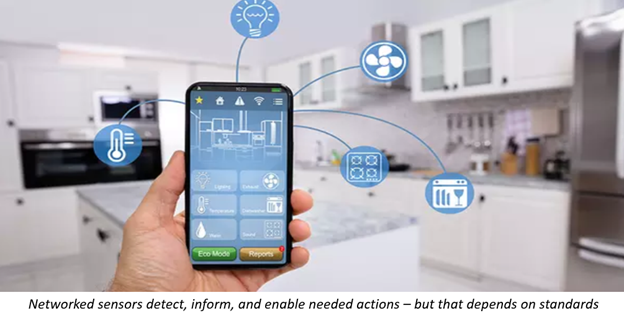
NIST’s Eugene Song and Kang Lee presented on how standards and interoperability empower smart sensing in a course titled, “Mastering IoT Design: Sense, Process, Connect, Part 1: Empowering Smart Sensing with Standards and Interoperability,” conducted by EE Times University.
Lee noted that sensors in Internet of Things (IoT) applications are ubiquitous – in aircraft, automobiles, and manufacturing. In homes, sensors detect smoke, indoor temperature changes, and outside motions etc. In healthcare, sensors measure body temperature, blood glucose concentrations, and heart rate, etc.
Such IoT application trends drive sensor requirements for IoT applications, stated Lee. Vendors and users need assurances that they will sense what they are supposed to, protect personal data, interoperate with networks, and more. Meeting these requirements also means overcoming diverse challenges related to their use, such as energy efficiency, environmental factors, and ensuring affordability.
Lee provided a checklist for choosing sensors, noting that they should:
- Be “smart” sensors, capable of applying edge computing and artificial intelligence
- Adhere to standards, such as:
- Being globally identifiable
- Being secure
- Doing time synchronization
- Enabling interoperability and “plug-and-play”
Song covered the soon-to be applicable standard for smart sensors and networks, from his perspective as Chair of IEEE P1451.0 Working Group for a Smart Transducer Interface for Sensors, Actuators, Devices, and Systems. The working group is currently balloting on the IEEE P1451.0 standard for smart transducer (sensors and/or actuators) interfaces and network interfaces. The core standard will define common functions, network services, transducer services, and transducer electronic datasheet (TEDS) formats; these will help achieve data interoperability in sensor level and network level for IoT, industrial IoT and cyber-physical system (CPS) applications. Eugene also talked about deployment and the interoperability testing method of IEEE 1451-based sensor networks.
Lee ended by addressing the benefits of IEEE 1451 standards-based sensor networks, which include those mentioned in the checklist, as well as:
- Reduced human error
- Easy installation and upgrades
- Reduced life-cycle costs

